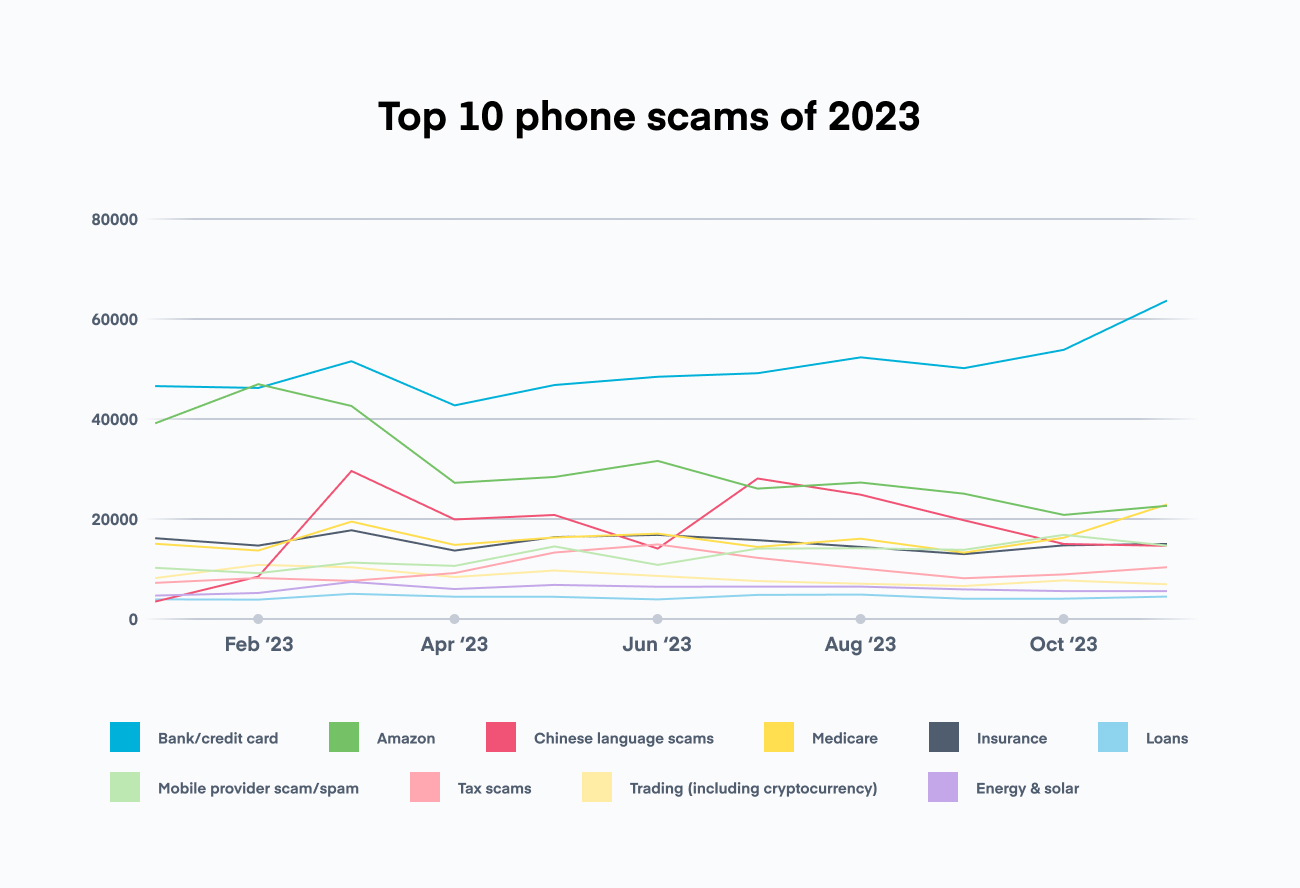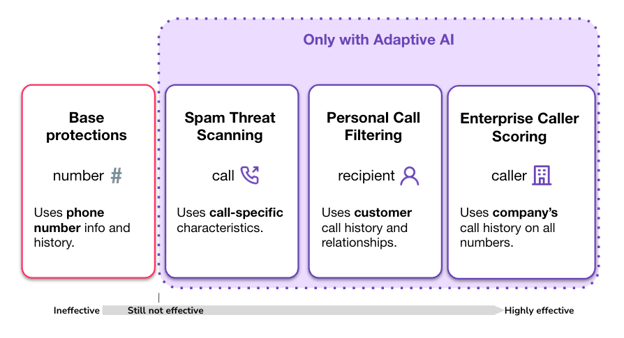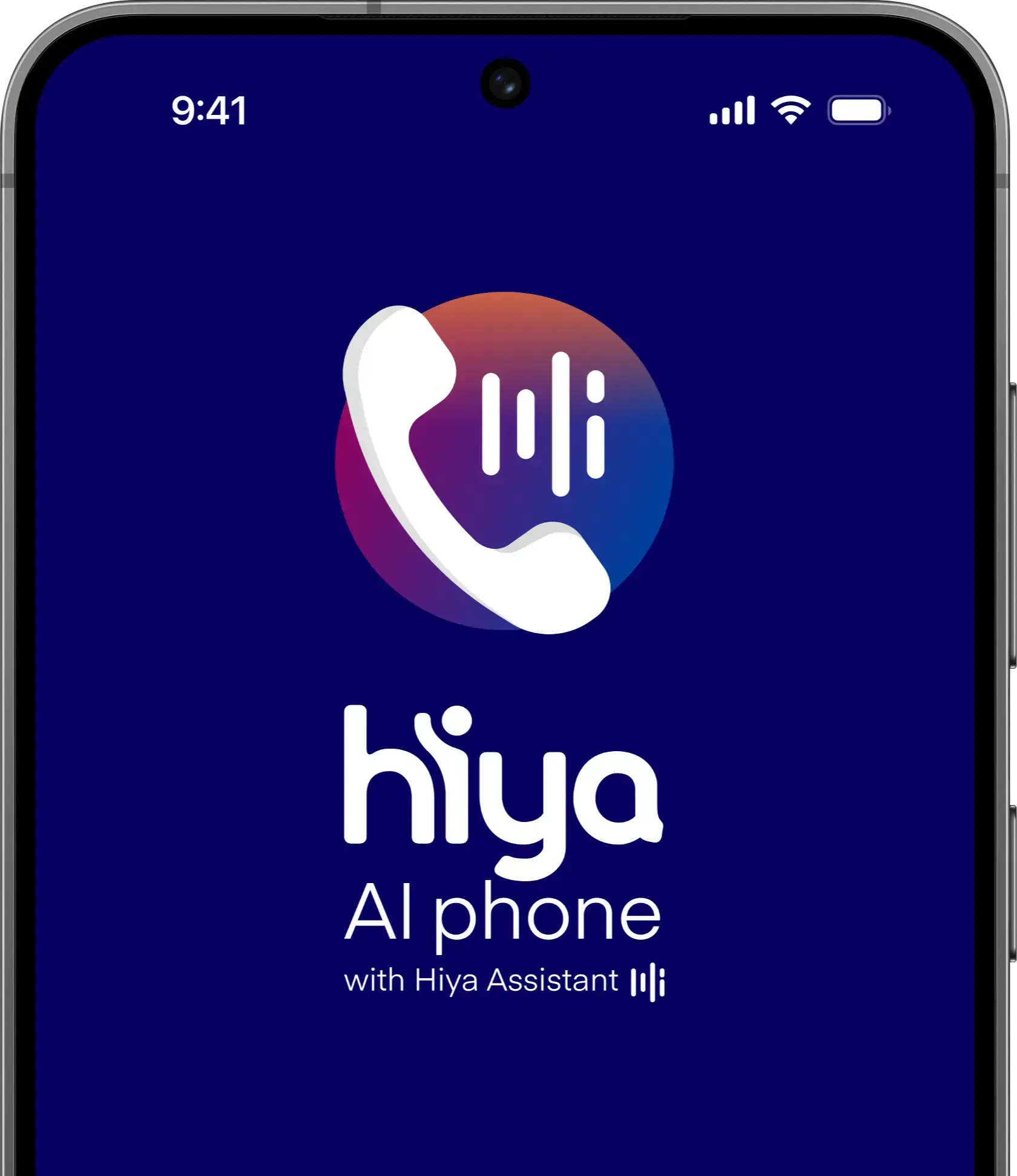.jpg)
Scam calls are a worldwide problem. Each year, Hiya analyzes billions of calls across 40+ countries, and of those calls, more than 14% were unwanted (which includes both scam and nuisance calls) in 2023, according to Hiya’s most recent State of the Call Report.
The proliferation of scam phone calls is hurting consumers, businesses, and mobile carriers. Consumers are losing trust in voice calls as they experience more and more unwanted calls — both scam and nuisance calls. Businesses are experiencing declining business results from customers and prospects who refuse to answer the phone unless they know who is calling. Mobile carriers risk losing customers who simply stop using the phone and turn to other means of communication or switch to another provider who can protect them better.
This blog post examines what scam calls are, how they work, and the new, AI-powered tools that are being used to combat the ever-growing volume of scam calls. Read on to learn how mobile carriers, enterprises and consumers can protect themselves (and their customers).
Understanding phone call scams
Telephone scammers use a variety of tactics to snare their victims, including:
- Create a sense of urgency – For example, a scammer may pretend to be calling from your utility company, claiming your electricity will be cut off within the hour unless you pay them immediately. Scammers want you to act quickly, before you have time to think things through.
- Instill fear – Loved ones scams and grandparent scams are good examples. With these scams, the caller pretends to be a grandchild or other loved one in trouble with the law and in immediate need of money.
- Spoofing to appear local – Scammers will commonly “spoof” (illegally change) the phone number that appears on the call recipient’s phone. They may call claiming to be from your bank, replacing their real phone number with the bank’s phone number. Neighborhood spoofing is also common, where the scammer spoofs a local phone number so the call appears to be local, when it can actually be coming from overseas.
What are the latest scam phone calls?
Hiya is in a unique position to measure scam calls around the world, with insight into spam and scam calls in more than 40 countries. Mobile phone users worldwide using spam protection services powered by Hiya can report unwanted calls and leave comments describing the call. Keywords in those comments are used to measure the volume of specific scams. Below are the world’s 10 most common scam phone calls of 2023.

1. Bank/credit card scam calls – The fraudster may say there’s a problem with your credit card or bank account and they will help you correct the problem — if you provide your account information.
2. Amazon impersonators – Amazon impersonators may claim that they suspect an unauthorized purchase and they need your Amazon account number and password to clear up the matter.
3. Chinese language scam calls – These scams begin with a robocall in Chinese that informs the recipient that there is some kind of legal problem and they need to press a button to speak to a representative of the Chinese Embassy, Chinese Consulate, or local police to avoid arrest.
4. Medicare scam calls – The goal of this scam is to obtain the victim’s Medicare number so the scammer can falsely bill the US government for medical services never rendered.
5. Insurance scam calls – These include auto insurance, life insurance, health insurance, and even burial insurance. Scammers may be selling a bogus policy or simply trying to obtain personal information.
6. Loan scam calls – Hiya users report getting calls offering fraudulent personal loans, business loans, home loans, car loans, government loans, and student loan forgiveness.
7. Mobile phone provider impersonators – Scammers pretend to be agents from one of several major mobile phone providers offering a new phone upgrade or a special rate on a phone contract.
8. Tax scam calls – Among the most popular are HMRC scams in the UK, IRS scams in the US, and CRA scams in Canada.
9. Trading/investment scam calls (including cryptocurrency) – Whether it’s stocks, real estate, or cryptocurrency, victims are lured by investments promising high returns, but they often lose much or all of the money they put in.
10. Solar/energy scam calls – Scammers offer solar panels, half-price energy bills, clean energy upgrades, government energy subsidies, and free energy price comparisons.
The financial impact of phone scams
According to the U.S. Federal Trade Commission, consumers reported losing more than $10 billion to fraud in 2023 — a 14% increase from the previous year. That was for the US alone, but fraud is rampant across the world.
Hiya’s State of the Call 2024 report, which is based on a survey of more than 12,000 consumers in six countries, revealed that 16% of consumers said they lost money to a phone scam in the past year. The average amount of money lost by those who were scammed was $2,257. Below are the reported losses by country (converted to US dollars):
- United States – $865
- United Kingdom – $789
- Canada – $1,342
- Spain – $1,531
- France – $3,596
- Germany – $4,649
How can I stop spam phone calls and robocalls?
Although scammers are using the latest technology and constantly changing their tactics to avoid detection, not all is lost. There are powerful, new tools that can help you fight back against telephone scammers.
How mobile carriers can protect consumers from scam calls
Mobile carriers can work with a voice security provider such as Hiya to stop phone scammers and spammers before they can harm their subscribers. Hiya’s spam protection solution, Hiya Protect, works at the network level to protect subscribers from spam and fraud calls.
Hiya Protect uses Adaptive AI, a self-learning spam protection system that adjusts to the latest threats. Unlike other solutions, it uses a multi-layer approach to analyze every aspect of a phone call, from the phone number, to the call recipient, the caller making the call, and the characteristics of the call itself.

Hiya’s Adaptive AI technology analyzes every facet of a call to provide the most complete and effective spam and fraud call protection available.
How individuals can protect themselves from scam calls
Individuals should first check with their mobile carrier to see if it offers call protection at the network level, such as AT&T Call Protect or EE Scam Guard. If it doesn’t offer any built-in protections, individuals can download the Hiya app, which is available on the App Store for iOS and Google Play for Android.
How businesses can protect themselves from scams and improve the customer experience
Increasingly scammers are targeting businesses in hopes of bringing in larger jackpots. Last September, MGM Resorts experienced a security breach that forced the company to shut down systems that enabled everything from slot machines to electronic room keys, resulting in a loss of $100 million. The culprit: A hacker called tech support pretending to be an employee and was given access to the company’s network.
There are other phone scams that specifically target businesses, such as Google Business Profile scams and tax scams. Here are things that businesses can do to fight back against telephone scammers.
- Train employees – Make sure employees are trained to identify and know what to do if they receive a suspected scam call. Remind them that scammers will sometimes pretend to be company employees in order to gain access to finances or sensitive company information. See our blog post: Voice fraud and the threat of generative AI.
- Raise awareness among customers – If your company name is being used in scams, warn your customers so they can be on the lookout for suspicious calls. Remind customers of your policies, for example, that company representatives will never call and ask for account numbers and PIN numbers.
- Identify yourself on outbound calls to customers – One of the most costly effects of phone scams for businesses is that people have stopped answering any calls that come from a number not stored in their contact list. That makes it difficult to reach both prospects and customers. A great way to solve this problem is to add branded caller ID to your calls. Branded caller ID enables businesses to display their company name, location, and depending on the device and/or carrier, logo and call reason on outbound calls made to mobile phone. In fact, 92% of consumers say they are more likely to answer a call if they know who is calling, according to Hiya’s State of the Call 2024 report. See what customers see when you call with a free call inspection.

With and without Hiya’s Branded Call
Learn more
Below are resources that can help you learn more about scam calls and how to protect yourself against them.
Global Call Threat Report - Compare spam and fraud rates in more than 40 countries.
State of the Call 2024 - See results of a worldwide survey to understand how unwanted calls are affecting consumers, businesses, and IT & security leaders.
Case Study: Gabb Wireless - Read how Gabb Wireless’ partnership with Hiya enabled it to block spam and fraud calls with 97.4% accuracy.








